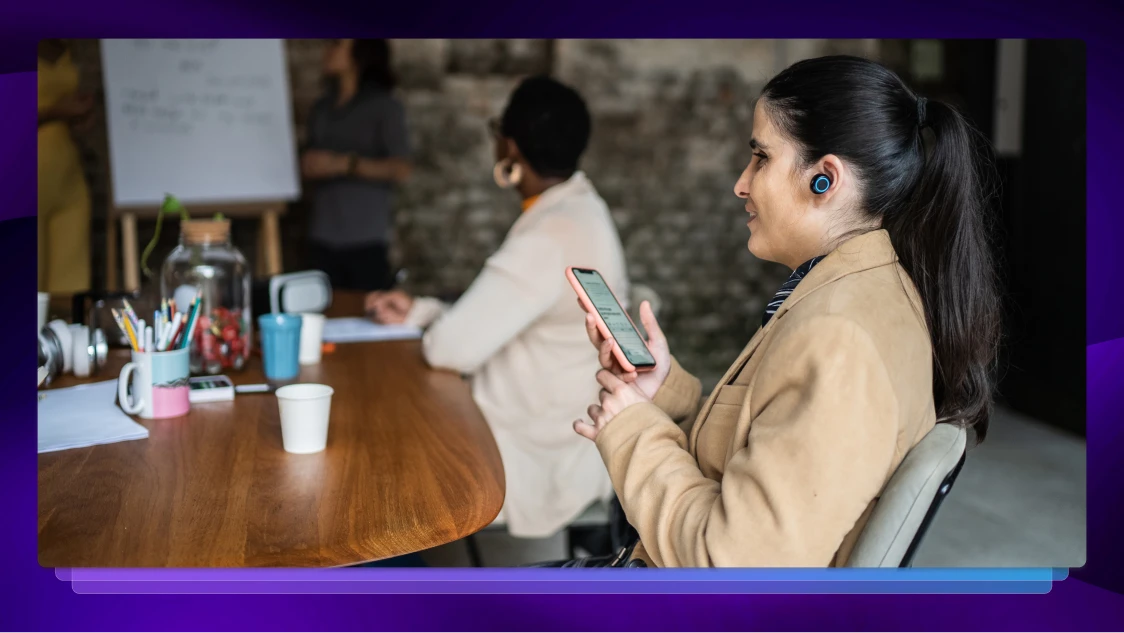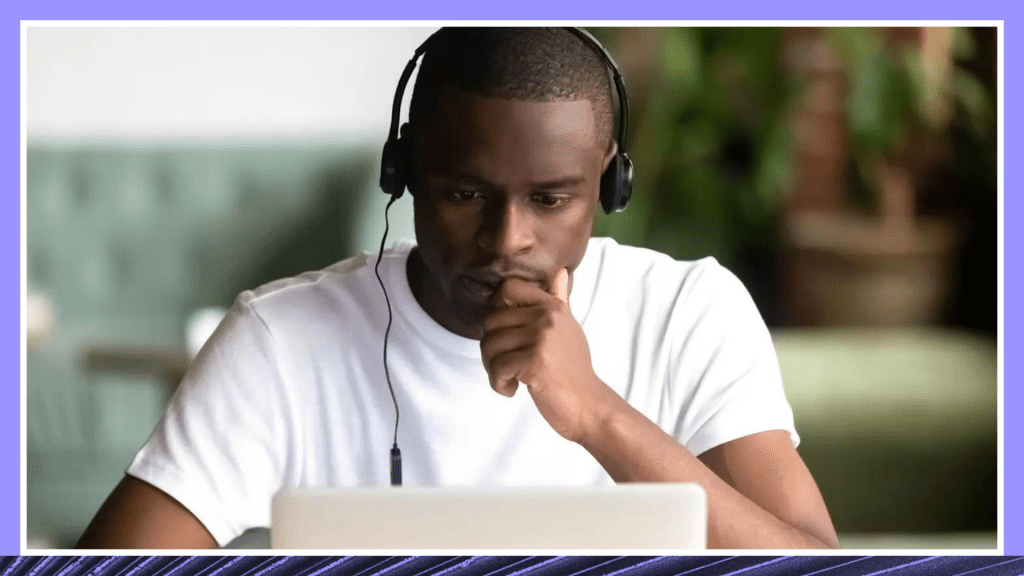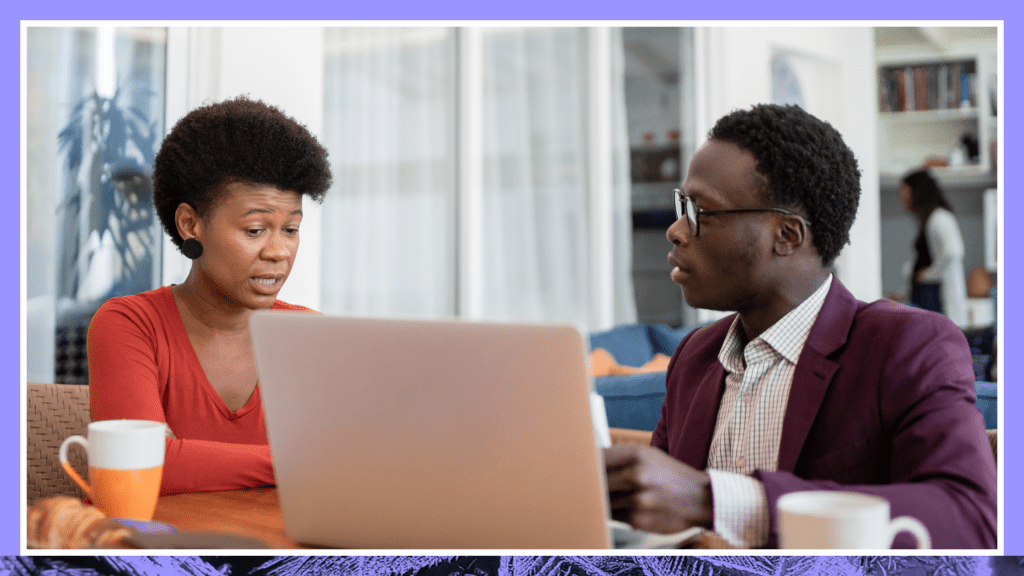Navigating Deafness in a Digital World: Q&A With Rachel Kolb
Learn what it’s like for Rachel Kolb—a writer, speaker, scholar, and disability advocate—to navigate deafness in a digital world.

Rachel Kolb is a writer, speaker, scholar, and disability advocate whose work has been featured in The New York Times, The Atlantic, Poetry magazine, and TEDx Stanford. She was the first signing Deaf person to be selected as a Rhodes scholar, and she is currently a Junior Fellow in the Society of Fellows at Harvard University.
International Week of Deaf People, which takes place annually during the third week of September, is celebrated by the World Federation of the Deaf (WFD) and its national associations and affiliates, including the National Association of the Deaf (NAD) in the United States. The overarching aim of International Week of Deaf People is to recognize, celebrate, and raise awareness about the vibrancy of sign languages and also to promote the rights of Deaf communities around the world.
Tell us about what Deaf-related projects and issues have been on your mind this past year
I finished my Ph.D. in 2020 and started a postdoc last fall, and I’ve been experimenting with some new writing projects about the historical legacies and present-day complexities of different forms of communication. I’ll also be revising and publishing my Ph.D. dissertation, which explored representations of language and disability in American literature, at some point.
Like many of us working from home during the pandemic, I’ve spent a lot of time connecting with other people virtually. That’s made me appreciate how the visual medium of the Internet has enabled Deaf people and ASL-related innovation, and it’s also made me appreciate the value of in-person interaction and embodied communication.
I’ve thought a lot about digital and in-person accessibility (more on that in a bit) and how to open up more conversations to make this world more equitable and accessible and welcoming to more different types of people. In this era of masking and physical distancing, we’ve all had to find new ways of interacting with each other, and I think Deaf people have drawn from their existing resourcefulness in doing this. Even if we have our moments of exhaustion, too.
“In this era of masking and physical distancing, we’ve all had to find new ways of interacting with each other, and I think Deaf people have drawn from their existing resourcefulness in doing this.”
What are some of your preferred ways to communicate—both remotely and in person?
I was born Deaf and, in general, I would describe myself as a visually-oriented person. I grew up using sign language as well as spoken and written English, and given the choice, I still prefer to sign with other people. I do have a cochlear implant (which I got later in life), and I also can speak and lipread, but language is most accessible to me in its visual form.
Lipreading itself is also a misnomer: it isn’t reading. It’s a lot of work! And it also puts the burden on the Deaf person to figure out what is being said.
Can You Read My Lips from Little Moving Pictures is a short film about lipreading
based on Rachel Kolb’s essay, Seeing at the Speed of Sound. Rachel narrates and stars in this short.
I can lipread and figure out what nonsigning hearing people are saying to me, usually, but I’ve learned this works best in smaller settings and for limited amounts of time. I’ve learned to express my preferences, and have also learned to express what other people can do to make different situations more accessible for us all. But I, like anyone else, am constantly evaluating how to improve communication and mutual understanding.
“Lipreading itself is also a misnomer: it isn’t reading. It’s a lot of work! And it also puts the burden on the Deaf person to figure out what is being said.”
I also grew up using sign language interpreters for my entire education. I still use interpreters on a regular basis, and I also use other tools like captioning, transcripts, notetaking, and written messaging, and email. All of these are important tools for communication, and I truly believe that having the ability to communicate more flexibly can be beneficial to lots of people.
My family and close friends tend to sign with me, both Deaf and hearing. The friends I have who haven’t learned sign are at least decently Deaf-aware, and they tend to do things like face me and speak clearly, meet in a well-lit or less distracting environment, write things down if needed, and so forth. I love texting and email and just about any typed digital communication.
I’m a writer so I am constantly writing out my thoughts and chatting with other people. I request formal accommodations like interpreting or captioning for work-related events, and I use video relay services with an interpreter to make more routine phone calls like scheduling doctor’s appointments.
“The friends I have who haven’t learned sign are at least decently Deaf-aware, and they tend to do things like face me and speak clearly, meet in a well-lit or less distracting environment, write things down if needed, and so forth.”
What would you like more hearing people to know about deafness?
I wish more hearing people knew more about the richness and the potential of sign language, and of Deaf ways of communicating and achieving human connection. Deaf people can be real experts in the possibilities of multimodal communication. Also, I wish more hearing people thought about communication as a shared collective responsibility.
We all have the right to language and the right to understand what’s being said around us, and we also have the responsibility to make sure that our work and ideas are accessible to the other people we meet. Hearing people benefit from access, too — not least via gaining their own access to Deaf perspectives, contributions, interactions, and ideas!
“I wish more hearing people thought about communication as a shared collective responsibility. We all have the right to language and the right to understand what’s being said around us, and we also have the responsibility to make sure that our work and ideas are accessible to the other people we meet.”
Accessibility is never perfect, and is always an unfolding process and a negotiation between different people or groups, but I still like to think of it in terms of its vibrant human possibilities, its invitation to better understand and engage with each other, not only as an obligation or a legal requirement.
What other d/Deaf writers, artists, thinkers, and content creators do you follow?
I’m always discovering more d/Deaf (and DeafBlind!) people who introduce me to new ideas and new ways of thinking! For starters, I’ve been a huge fan of Christine Sun Kim’s artwork for years. Sara Nović’s writing and social commentary is smart and well-considered. Nakia Smith (aka Charmay) has brought renewed public attention to Black American Sign Language and its rich heritage.

Christine Sun Kim creates pie charts that cleverly address various types of discrimination she faces as a deaf person. This chart depicts “Degrees of Deaf Rage While Traveling.”
I could toss out many other famous deaf people: Matt Maxey, Millicent Simmonds, Peter Cook, Sean Forbes, Rikki Poynter, Renca Dunn, Lauren Ridloff, Russell Harvard, Haben Girma, John Lee Clark, the folks at Deaf West Theatre. Other more widely known figures like Marlee Matlin and Nyle DiMarco. And we haven’t even tapped the academic world and its discussions about things like linguistics, psychology, philosophy, and literature. Or into the deeper world of TikTok, which I gather can be a vibrant signing space these days. This is by no means an exhaustive list.
What do you think of the representation of deafness in mainstream media during the last few years?
This past year has been big for d/Deaf representation in the arts and in film. We’ve had films like Sound of Metal and CODA draw a lot of attention, following on the success of other recent films like A Quiet Place, though in the future I’d like to see more different storylines that don’t revolve around familiar mainstream tropes about music and sound.

Emilia Jones appears in “CODA” by Siân Heder, an official selection of the U.S. Dramatic Competition at the 2021 Sundance Film Festival. Courtesy of Sundance Institute.
I’d also like to see more stories that represent more different and intersectional parts of Deaf experience. Having three Deaf lead actors cast in CODA was huge, and I think the positive response to films like that reveals how audiences are hungry for more authentic casting and more different types of stories. Casting Deaf and disabled actors to play Deaf and disabled roles still needs to happen more often than it does. I’m hopeful that we’ll see more Deaf people in more corners of Hollywood and more parts of the writing and production process in years to come.
“Casting Deaf and disabled actors to play Deaf and disabled roles still needs to happen more often than it does. I’m hopeful that we’ll see more Deaf people in more corners of Hollywood and more parts of the writing and production process in years to come.”
What are some tools you have found most useful for accessibility?
The thing is, Deaf people already thought about digital accessibility long before COVID! We’ve been talking about captions and video chatting and working remotely for a long time, and we’ve also used the Internet to connect with other Deaf people who might not live in our country, state, or city. During COVID, I’ve made more use of many online tools I already used before, but more often and more broadly. I’ve switched over to texting and messaging and using collaborative documents with more people, and I’ve gotten more used to managing video chats with people who might not sign.
But I’ve also noticed improvements as I do this: for instance, the time of this pandemic has coincided with a surge in digital accessibility tools like accurate voice-transcription software. I’m always quick to remind hearing people that auto-captions are not equivalent to full access (see the online hashtag #CRAPtions!), but they can be a useful tool for certain situations. It all depends on the particular d/Deaf person and what they prefer for a given interaction.
What do you wish more hearing creators and planners knew about captions and access?
I wish more hearing people thought of captions and access as a routine part of a content-creation or event-planning checklist, just like including clear audio or video. Providing clear and accurate captions ensures that there are more available avenues to understanding what’s being said. It feels welcoming and equitable and removes a lot of existing disability labor — seeing good captions out there makes me feel like someone has anticipated my presence and wants to make sure I can enjoy this world, too.
Providing captions brings in new d/Deaf and hard-of-hearing audiences, and it gives us a reason to engage with and care about and support your work. It also enables more people to engage with videos and other online materials through visual means, such as when they’re not in an environment where they can listen to audio. (Ironically, one reason more online feeds have integrated more captions is as a way to grab more eyes while people are scrolling!)
As a side note, there’s still a lot of other digital accessibility work we can do, such as providing visual descriptions or making sure that websites are navigable for people who use screen-reading software.
“I wish more hearing people thought of captions and access as a routine part of a content-creation or event-planning checklist, just like including clear audio or video.”
Do you have ideas about what online accessibility might look like in the future?
My big dreams: how about an online world where I can open up any window, any video, any type of audio content and instantly find accurate captions or a transcript? That would be awesome. This applies to podcasts, too. I don’t spend as much of my time engaging with podcasts as some people do, but I do enjoy reading over transcripts or being able to follow along from time to time. Especially when one of my friends has just texted me saying, “You need to read some form of this and talk about it with me!”
I’d love to see more online content available in ASL, too. This would empower signing Deaf creators to get their ideas out there, and it would create more forms of online engagement and access for people who prefer to use ASL as their primary language rather than written English. This part would need to happen with the leadership of signing Deaf people, but I see so much potential if we’re able to achieve more widespread cultural awareness and appreciation.
As I said earlier, captions and transcripts and videos aren’t the only form of digital access — we still have a long way to go with visual description and making websites navigable for screen readers, for instance. Finally, empowering more Deaf and disabled artists and content creators will, I think, move us to more different forms of communicating and engaging with each other that we might not have even considered yet.
“Captions and transcripts and videos aren’t the only form of digital access — we still have a long way to go with visual description and making websites navigable for screen readers, for instance.”
To explore Rachel Kolb’s body of work, visit her website. Learn more about digital accessibility and the importance of adding captions and transcripts to your audio and video content on our blog.















